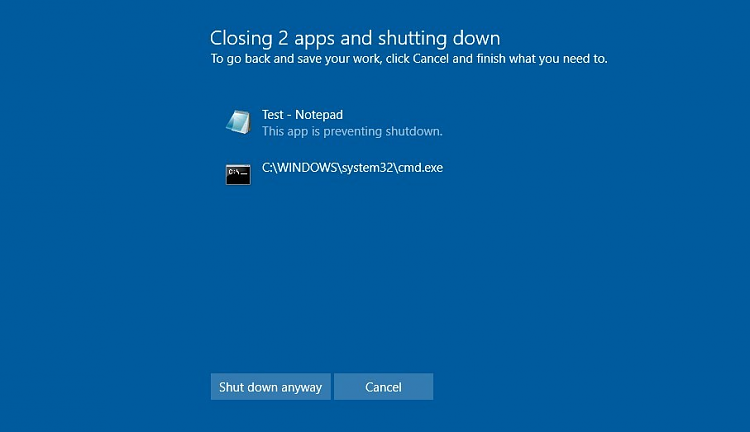New
#20
Slightly off-topic but in my experience there is a significant difference between
/t 0
and
/t 1
(or any other number greater than zero).
You might think the only difference is one second, but my observation suggests that /t 0 does a "graceful" shutdown which waits for apps to close themselves, and allows you to cancel and go back and save unsaved files if the app doesn't close naturally.
Whereas /t 1 is more brutal - it just shuts everything down after 1 second and kills apps regardless.
At least that's what I have observed - not sure where this might be documented.


 Quote
Quote



